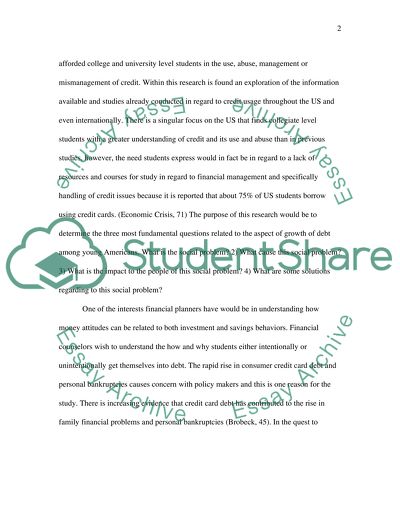Cite this document
(Young People and Financial Matters Term Paper Example | Topics and Well Written Essays - 3181 words, n.d.)
Young People and Financial Matters Term Paper Example | Topics and Well Written Essays - 3181 words. Retrieved from https://studentshare.org/finance-accounting/1511763-the-growth-of-debt-among-young-american
Young People and Financial Matters Term Paper Example | Topics and Well Written Essays - 3181 words. Retrieved from https://studentshare.org/finance-accounting/1511763-the-growth-of-debt-among-young-american
(Young People and Financial Matters Term Paper Example | Topics and Well Written Essays - 3181 Words)
Young People and Financial Matters Term Paper Example | Topics and Well Written Essays - 3181 Words. https://studentshare.org/finance-accounting/1511763-the-growth-of-debt-among-young-american.
Young People and Financial Matters Term Paper Example | Topics and Well Written Essays - 3181 Words. https://studentshare.org/finance-accounting/1511763-the-growth-of-debt-among-young-american.
“Young People and Financial Matters Term Paper Example | Topics and Well Written Essays - 3181 Words”, n.d. https://studentshare.org/finance-accounting/1511763-the-growth-of-debt-among-young-american.


